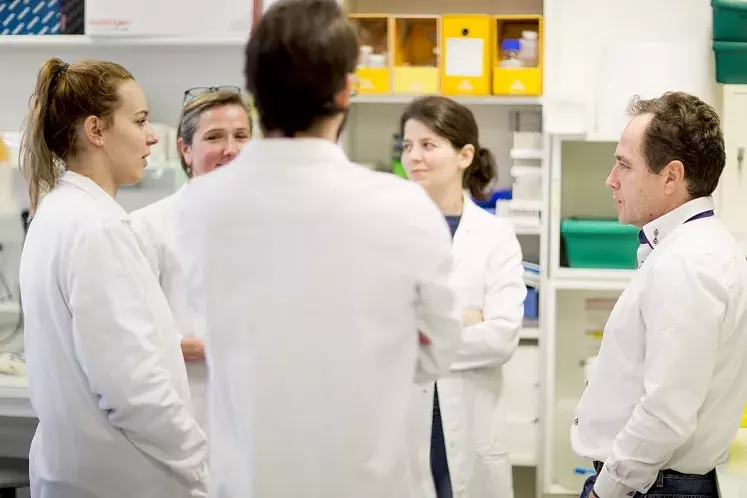Published on 17.12.2019
“A range of assumptions prompted us to think that pediatric onset forms had to have a genetic origin”, explains Frédéric Rieux-Laucat, director of the Immunogenetics of pediatric autoimmune diseases laboratory (Inserm/University of Paris) at Imagine Institute. But only some rare genetic causes had been identified. Thanks to the expertise of Imagine in this field, we have been able to explore the genome of 80 patients with this syndrome. However, it is a bit like looking for a needle in a haystack because it is about going to heart of the cells to identify one mutation in a single gene out of 22,000 known genes and out of the two billion letters that make up DNA. Sometimes a single letter of the great genetic code is modified. Add to this is the fact that from one individual to another, this genetic heritage is slightly different and you have an insight into the task at hand to identify a genetic cause.
“Another difficulty, continues the researcher, is having enough patient samples to carry out experiments which will show the causality of the mutation identified. For this we have been supported by the reference center for rare diseases of autoimmune cytopenia in children (CEREVANCE) in Bordeaux, which centralizes clinical data on a national level, as well as by the reference center for hereditary immunodeficiencies (CEREDIH) at Necker.”
Making the connection between clinical and genetics
With a wealth of experience, Frédéric Rieux-Laucat’s team was able to highlight a genetic origin in 65% of the 80 patients that had a genetic test. For 49 of them, the mutation was present in the germ cells – sperm cells and oocytes – and therefore could possibly be passed on to their descendants.
“32 of these mutations were not a complete surprise to us, notes Frédéric Rieux-Laucat. They affect genes, 9 in this case, known for their role in primary immunodeficiencies, which are immune system diseases with an increased susceptibility to infections. On the other hand, the mutations identified in 20 patients had never been referenced in immune system diseases up to now.” For 35% of patients, however, no genetic cause has been highlighted. However, these were patients with less severe symptoms. It is possible that “less damaging” mutations remain hidden in areas of the genome that are yet to be explored, such as the introns, or that they are only present in a limited proportion of immune system cells (known as somatic mutations).
This research broadens the possibilities for patients. Identifying the defective gene is essential for continued research to better understand the disease. This is the starting point to explore defective cellular mechanisms and to try and restore them. In this specific case, the existence of common denominators with other diseases explored at Imagine, the primary immunodeficiencies, can even be an accelerator to identify new treatments or to reposition existing therapies. “Offering genetic tests to patients with Evans syndrome could then help to better diagnose the disease and determine more suitable treatments depending on the individual prognosis” concludes the researcher.



